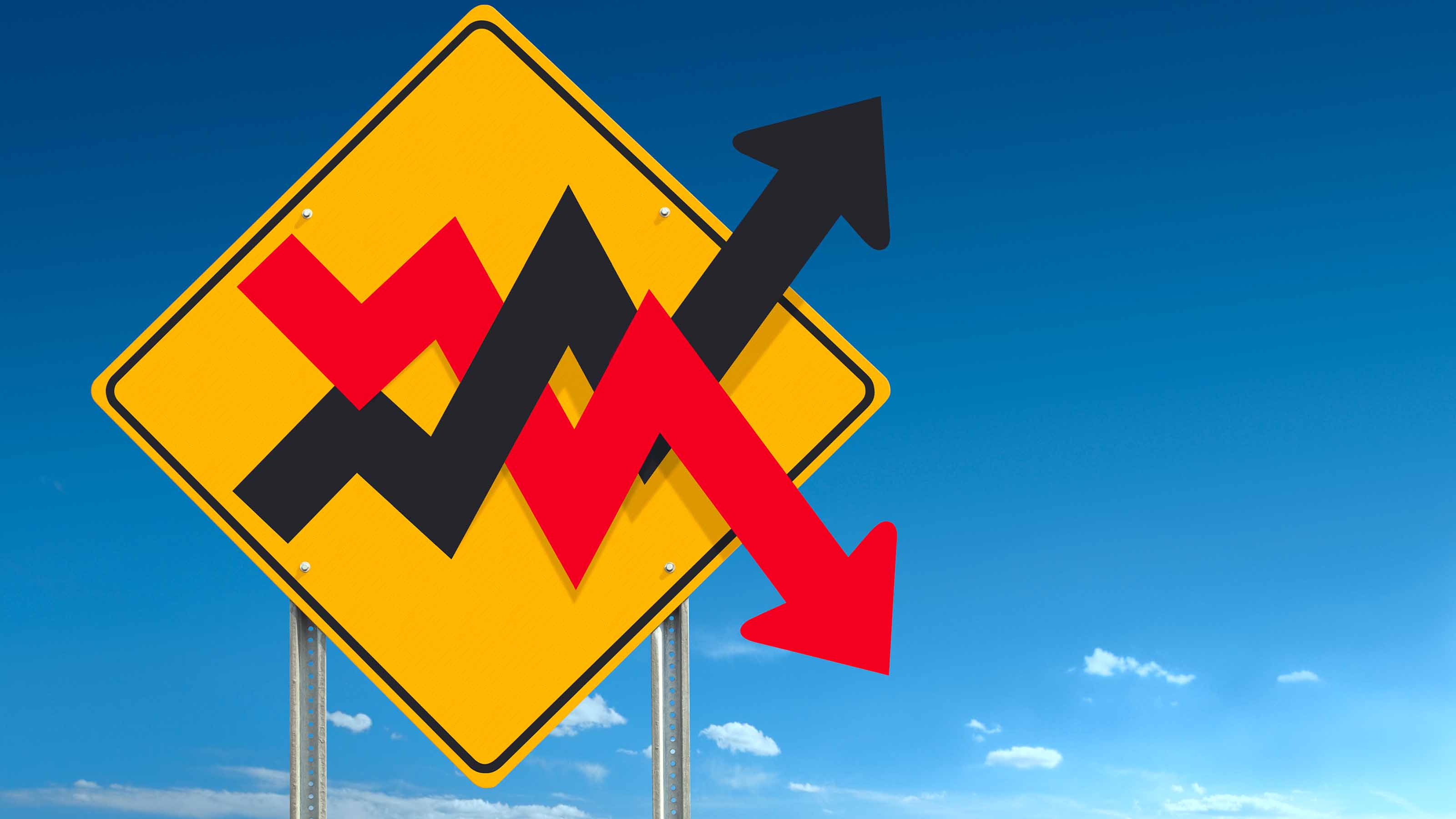In Praise of Balance
Don't let critics of balanced funds discourage you from investing in them. A quality one can be the cornerstone of a long-term portofolio.

In late 2003, a reader wrote to me, Kiplinger's Portfolio Doctor, and bemoaned her sagging IRA. It had several stocks and a bunch of inconsistent funds. Loads and high expenses hurt, as did lousy fund management. Still, it was the sort of aggressive portfolio you might expect eventually to out-earn a simple mix of two parts staid blue-chip stocks and one part AA-rated bonds. Instead, it was an albatross.
I've received scores of similar letters. This one stands out because the writer added, "If I had invested all of my IRA money over the years in Vanguard's Wellington fund (VWELX), instead of just some of it, I'd be better off than I am today." I'm sure she's right. It's easy to admire Wellington's numbers. Over the past ten years, Wellington has returned 10% annually. That's one percentage point more than Standard & Poor's 500-stock index and better than the return on 80% of the large-growth-stock funds in Morningstar's universe, including such top-ranked funds as Brandywine (BRWIX) and Harbor Capital Appreciation (HACAX).
But Wellington isn't a growth fund. It's a balanced fund that is less volatile and normally composed of 60% stocks and 40% bonds, managed by different people. The fund has a little flexibility in the overall allocation. Today, it's at 65% stocks. Larry Swedroe, the author of several investment books that preach indexing, once told me Wellington is about the only actively managed fund he likes.

Sign up for Kiplinger’s Free E-Newsletters
Profit and prosper with the best of expert advice on investing, taxes, retirement, personal finance and more - straight to your e-mail.
Profit and prosper with the best of expert advice - straight to your e-mail.
Wellington's been in the news because it's finishing stage two of a rare management change. In 2002, the stock portion got a new manager. In a few months, its longtime bond manager Paul Kaplan retires. However, the replacements are qualified and experienced. Vanguard says any changes to Wellington's strategy will be minimal, unlike, say, the dramatic shakeups Fidelity Magellan fund (FMAGX) makes whenever Fidelity changes its skipper.
With this as background, let's discuss the very idea of a balanced fund. I like them -- at least the ones that work -- but many financial advisers and mutual fund experts think a balanced fund is a dumb idea. Incidentally, the category is now sometimes called "moderate allocation," which refers to a "moderate" 50% to 70% invested in stocks. The word "balanced" could be misinterpreted to suggest a strict 50-50 weighting of bonds and stocks, when in fact there is wiggle room.
Critics of the balanced-fund concept start by pointing to what they regard as a glaring flaw: Because it is two funds in one, you have two chances that one side or the other will be disastrous. You can't easily tell this if you just look at the total return and yield figures and rankings. But here's a clue: Find the long-term return, preferably five or ten years, of a balanced fund. Then compare its stock and bond weightings with their appropriate benchmarks. With stocks, use the SP 500. With bonds, you'll want a Treasury index, or if the fund owns corporate bonds, as Wellington does, the broader Lehman Brothers aggregate bond index.
The SP 500 has averaged a 9% return over ten years, so two-thirds of that (Wellington's stock weighting) is 6%. Lehman's bond index is up 6% a year, so one-third of that is 2%. Thus, if Wellington was dumb or ordinary, it would have a long-term return of 8%, not its actual 10%. That is an excellent result. At Dodge & Cox, you find a similar pattern. Dodge & Cox Balanced fund (DODBX) has returned 12% over ten years and 10% for five -- better than you would have earned with 60% of a chunk in Dodge & Cox Stock (DODGX) and 40% in Dodge & Cox Income (DODIX). All of these Dodge funds are closed to new investors, but if you're an existing shareholder, don't hesitate for a minute to feed the balanced fund. It works because Dodge & Cox, like Vanguard, is good at both stocks and bonds. Not all fund companies are.
After the two-chances-to-fail argument, balanced-fund naysayers contend that you'll do better if you pair a terrific stock fund with an excellent bond fund. That, however, assumes you're a willing fund picker and don't mind extra volatility or the job of rebalancing. Over the past five and ten years, Fidelity Balanced has done so well that only a stellar combination such as Fidelity Contrafund (FCNTX) and Harbor Bond (HABDX) -- that would be the all-world managers Will Danoff and Bill Gross, respectively -- would beat it, and then only by a little.
There are some crummy balanced funds from third-rate fund companies. But if you stick with quality, there's nothing wrong with using a balanced fund as the cornerstone of any long-term-oriented total-return portfolio. In fact, it's a wise move.
Opinions expressed in this column are those of the author.
Get Kiplinger Today newsletter — free
Profit and prosper with the best of Kiplinger's advice on investing, taxes, retirement, personal finance and much more. Delivered daily. Enter your email in the box and click Sign Me Up.

-
 Get Netflix, Hulu and Apple TV Plus for Free by Joining T-Mobile
Get Netflix, Hulu and Apple TV Plus for Free by Joining T-MobileT-Mobile customers save up to $35/month on streaming services thanks to this Netflix, Hulu and Apple TV Plus bundle. Here’s how to get it.
By Rachael Green
-
 Missed Tax Day? Nearly One Million Taxpayers Still Can File and Claim Valuable Tax Refunds
Missed Tax Day? Nearly One Million Taxpayers Still Can File and Claim Valuable Tax RefundsTax Refunds Some folks don’t file taxes simply because they don’t earn enough, but they could be missing out on a significant tax refund.
By Gabriella Cruz-Martínez
-
 Why Investors Needn't Worry About U.S. Credit Downgrade
Why Investors Needn't Worry About U.S. Credit DowngradeFitch Ratings The United States saw its credit rating downgraded for just the second time in history, but experts aren't worried about the long-term damage to stocks.
By Dan Burrows
-
 Income-Investing Picks for a Recession
Income-Investing Picks for a RecessionInvesting for Income Some consequences of an economic downturn work to the benefit of fixed-income investors. Here are three fund ideas that fit the bill.
By Jeffrey R. Kosnett
-
 Dogs of the Dow Are 2022's Best in Show
Dogs of the Dow Are 2022's Best in Showdividend stocks Some of the best investments for income investors in a volatile 2022 have come from the Dogs of the Dow.
By Jeffrey R. Kosnett
-
 Bond Values in a Volatile Market
Bond Values in a Volatile MarketInvesting for Income While the market's instability may not be over just yet, the latter half of the year should be less daunting – and possibly more rewarding – for investors.
By Jeffrey R. Kosnett
-
 Should You Buy Bonds Now? What To Consider
Should You Buy Bonds Now? What To Considerbonds The fixed-income market has been turned on its head in recent years, but there are still opportunities for those looking to buy bonds again.
By James K. Glassman
-
 Dividend Dates: A Beginner's Guide
Dividend Dates: A Beginner's Guidedividend stocks Everything you need to know about ex-dividend dates, dividend announcements and other parts of the dividend calendar.
By Charles Lewis Sizemore, CFA
-
 Income Investors Should Look Beyond the Ukraine Invasion
Income Investors Should Look Beyond the Ukraine Invasionstocks Unless you invested in a Russian-themed ETF or an emerging markets index fund, the destruction of Moscow's capital markets is a distraction for investors.
By Jeffrey R. Kosnett
-
 Consider Short-Term Bond Funds
Consider Short-Term Bond FundsInvesting for Income These funds own the kind of stuff that benefits from a healthy economy and can withstand the Fed's rate hikes.
By Jeffrey R. Kosnett